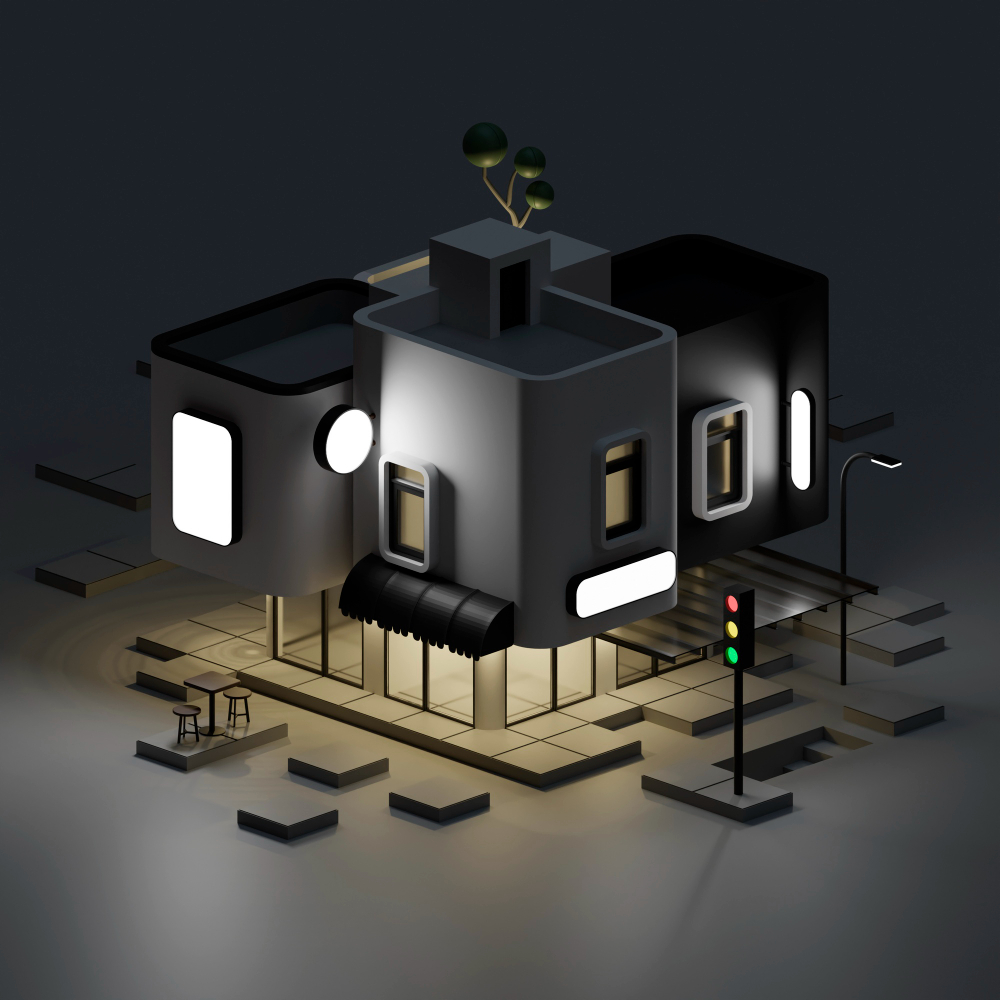
Starbucks has done something incredibly successful in Brownsville, Texas: they used 3D printing technology to build their newest location. This 400-square-foot café, which was printed on-site in just six days by PERI 3D Construction, a German company, is a tangible representation of speed, accuracy, and design in the digital age. Beyond its walls, however, the obvious absences of chairs, restrooms, and baristas loitering at the counter point to a more profound shift in the way we interact with physical spaces.
This Starbucks was designed with efficiency in mind rather than ambience by utilizing cutting-edge AI to optimize every aspect of the design and workflow. With features like mobile walk-up windows and drive-thru lanes, the building allows for movement without requiring stops. Deployable, scalable, and frictionless, it resembles an automated vending module quite a bit.
| 3D Printed Starbucks – Project Details | Information |
|---|---|
| Location | 2491 Boca Chica Blvd, Brownsville, Texas |
| Opening Date | April 28, 2025 |
| Builder | PERI 3D Construction, Germany |
| Operational Size | 400 sq ft (within a 1,400 sq ft footprint) |
| Construction Time | 6 days |
| Estimated Cost | $1.198 million |
| Service Model | Drive-thru and walk-up only; no seating or restrooms |
| Technology Used | 3D concrete printing, AI-optimized planning |
| Reference Source | TheStreet |
Texas as a Future City Testing Ground
Texas has subtly become a testing ground for futuristic architecture in the last ten years. In places like Georgetown, businesses like ICON Technologies Inc. have been using 3D printed homes to build entire neighborhoods. The emergence of these non-traditional building techniques is significantly altering conventional construction schedules, cutting down on material waste, and avoiding labor shortages, which have beset the building sector across the country.
This Starbucks transcends its status as a coffee shop in the context of changing urbanism. In quickly growing suburban areas, it could serve as a prototype for deployable, modular infrastructure. Such innovation thrives in sunbelt cities like Phoenix and Tampa, where pedestrian culture is hard to establish.
Algorithmic Spaces to Third Places
Starbucks has meticulously cultivated its image as a “third place”—a cozy setting between home and work—since the early 2000s. However, that ideology is gradually eroding with this new model. You don’t talk, you don’t sit, you don’t stay. You get up and go. This poses a fascinating query: can a coffee shop maintain its status as a cultural icon once it ceases to be a gathering place?
In this café, baristas operate more like operators in a highly efficient workflow area, with layouts that optimize volume and minimize human movement at every stage. The space is incredibly purpose-driven, built for speed rather than chance.
Combining Machine-Led Urban Design with Minimalism
The store essentially takes care of itself thanks to the xeriscaped landscaping, which includes gravel and drought-tolerant plants. No need for excessive water use or daily groundskeeping. It’s a very successful sustainability model. However, it also reveals a subtle shift from utilitarian minimalism to warm commercial aesthetics.
The cozy armchairs and locally produced artwork are no longer there. They have been replaced by a gray shell that is algorithmically optimized, compact, and clean. This new Starbucks is prepared to replicate like data packets across urban grids thanks to deliberate design changes that make it speak the language of high-efficiency retail nodes.
AI-Powered Infrastructure: Printed Cities’ Ascent
The process lowers building costs, expedites zoning compliance, and even predicts environmental impact by incorporating AI from the planning stage. This approach is incredibly flexible and provides cities with a tool for quicker development with fewer logistical challenges. It may even pose a threat to traditional architecture firms, especially for medium-sized commercial projects, according to some.
Automation increased in almost every industry during the pandemic, from remote medicine to online grocery shopping. Now, even the infrastructure of cities is vulnerable. This Starbucks may be the precursor to AI-generated cities, humming softly on the outskirts of Brownsville.
Innovation’s Reverberations Throughout Industries and Icons
Starbucks’ actions reflect a broader shift driven by technology, much like what Amazon accomplished with its cashierless Go stores or Tesla did with remote service hubs. Even though these innovations are very novel, they frequently have drawbacks. They offer great convenience, but at the expense of human connection and sensory experience.
Remarkably, public figures have even expressed interest in this type of modular, AI-driven design. For example, Elon Musk has expressed his appreciation for printed homes and is said to have looked into 3D construction options for SpaceX projects. At one point, Kanye West experimented with domed shelter designs that mirrored similar print-and-drop techniques. There is a common theme here: tech titans and celebrities agree that space will become more functional in the future rather than permanent.
Is the Human Aspect Going to Vanish?
A more comprehensive social reflection is sparked by this development. What will happen to community, comfort, and unpredictability as AI gains more control over our built environments? Is it people or processes that we are designing cities for? Starbucks’ new location challenges our ideas of what a coffee shop—and consequently, a public space—should be, in addition to encouraging us to embrace efficiency.
More structures might be constructed in the upcoming years, file by file, compressed, transferred, and printed into existence rather than brick by brick. This could prove to be a smart living victory for early adopters. Others might experience the loss of something intangible, possibly irreplaceable.
A Sign of Detachment or a Road Map for the Future?
It remains to be seen if this new Starbucks becomes the new norm or a one-off curiosity. However, one thing is very evident: we are moving into a time when the digital and physical worlds are blurred and buildings can be imagined as quickly as concepts. And that has great implications for how we live in space, as well as promise.
